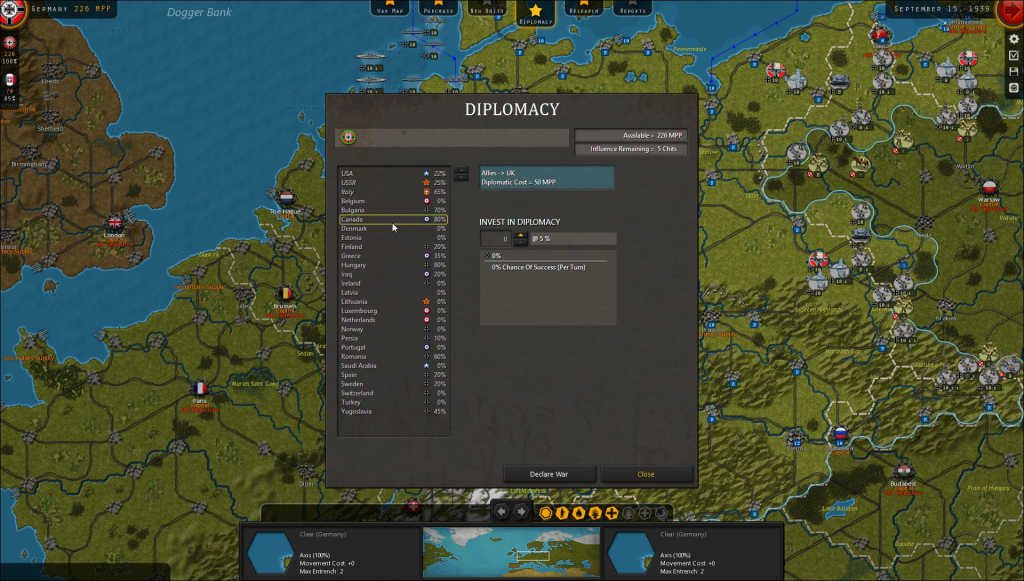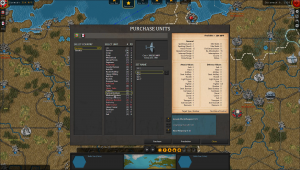Preview | Strategic Command WWII: War in Europe
Strategic Command WWII: War in Europe, the third entry in Fury Software’s long running series, is currently in late beta in anticipation of a mid-November release. There’s already praise being passed around about how accessible the game will be, which is certainly high praise in a genre that notoriously often sees it’s games coming with manuals three-to-four hundred pages long, more units than you can shake a bayonet at, and formation/angle of attack functions that can swing or doom a battle.

Skipping over the 208 page manual (although admittedly 47 of those were regarding the included campaign creator/editor suite) and diving in revealed that the game is indeed surprisingly accessible. I’m new to the series and so only know some features to have been carried over from previous titles. For instance, the design decision to tuck 90% of the options that would normally clutter up a GUI into a right click menu. This is something that more wargaming titles should consider, with it liberating a lot of the screen space and also requiring a lot less re-selecting of units in order to to activate options. That said, in War in Europe, it is not only a useful feature for the sake of aesthetics and click-minimising, it also only displays actions which could be performed by the unit type in question, meaning you’re not going to get the option to prepare your boats for parachuting -etc- which is a major boon to accessibility in the game as it stands.

Soldier types -if you opt to use 3D models rather than UN tokens- are also extremely logical, with unit hardiness in the core four units underpinned by the amount of units displayed on the model. Where a garrison will just show a solemn soldier, the army and corps will show three and four, meaning the composition of your front lines is easy to spot. Unfortunately the stats of troop’s strengths and weaknesses aren’t freely accessible through clicking on them – which is a little bit odd when the game is willing to present you with information boxes for towns, terrain types and most other objects in the game; I was almost left expecting something similar to Civilization’s Civopedia to pop-up – but, that is expecting rather a lot, especially when the game has done a great job at keeping the unit types vastly lower than most games. Which is certainly a boon in this instance.
Another feature that returns from previous entries is the points system and associated research, production, and diplomacy menus. As you progress through each turn of the game you’re awarded points based on the militarisation status of your country, and your secure trade routes with nations you are allied too. These points serve as a universal currency and can be assigned to either: production of new units, diplomatically influencing other nations, or adding research focuses to the nation. Each of those are fairly self-explanatory, however, it should be added that even though the units have -an expected- production time-frame, there is an option to see what you have being completed over the next few months, as well as the fact that training is not tied to set locations.

What this last point means is that once your turn begins and it comes to the deployment stage, you can pick any area within range of any of your appropriate production facilities to have the unit spawn in; it means you’re not left playing catch up when your focus shifts from one front to another – stuck in a big push of transferring long required relief troops to the other side of your nation.
On the subject of movement and supply, the biggest surprise was that the HQ/Generals that were on the map during my starting turns were actually simply buff units. Versus Sengoku’s morale and loyalty boosting generals, or Barbarossa’s supply-line toting commanders -each with their own area of operation- this was an unexpected simplification of a system I am used to being an integral part of your planning before and during sudden lunges into enemy terrain. The removal of this need for a supply set up meant that I was much more free to use these units to boost smaller insertions and buff up small pockets of elite troops that I was using for tougher tasks

The game manages to maintain a decent pace, although AI turn times are certainly fairly lengthy, but they do have a fair bit of work to do what with the fact that mobilization (which builds as a reaction to the major player’s actions towards minor powers) and production can lead to quite a different composition of enemy forces that most games would have to anticipate. For example, if you hold the Maginot Line rather than encroaching through the Benelux into France then -once they recover from the shock of the initial war declaration and blitzkrieg- they can actually produce units faster than many would be able to defeat them; turning it into a game of artillery and bombing runs.
With this, depending on your diplomatic angle, you may be able to keep certain nations out of the war for longer than historically; and there’s also an event system which can generate and organise large groups of units for you in exchange for a set amount of your military points. This can rapidly open up new theatres without you needing to arrange transportation of units to -say- Tunisia, or Denmark.
So, if you fancy you could command the Allies, or the Axis, to a speedier -or different- result then this could be a game for you; notably, if you don’t want to command the whole faction you can also set various nations to AI control — If you don’t want to have to concentrate on readying Italy for war on the continent while you divide Poland, for instance.
We’ll have a full review of Strategic Command WWII: War in Europe live on the site closer to it’s launch date, which is set as the 17th of November. You can find out more information on it on it’s page on Matrix Games’ website, or on the developer’s website.
Comments are closed.